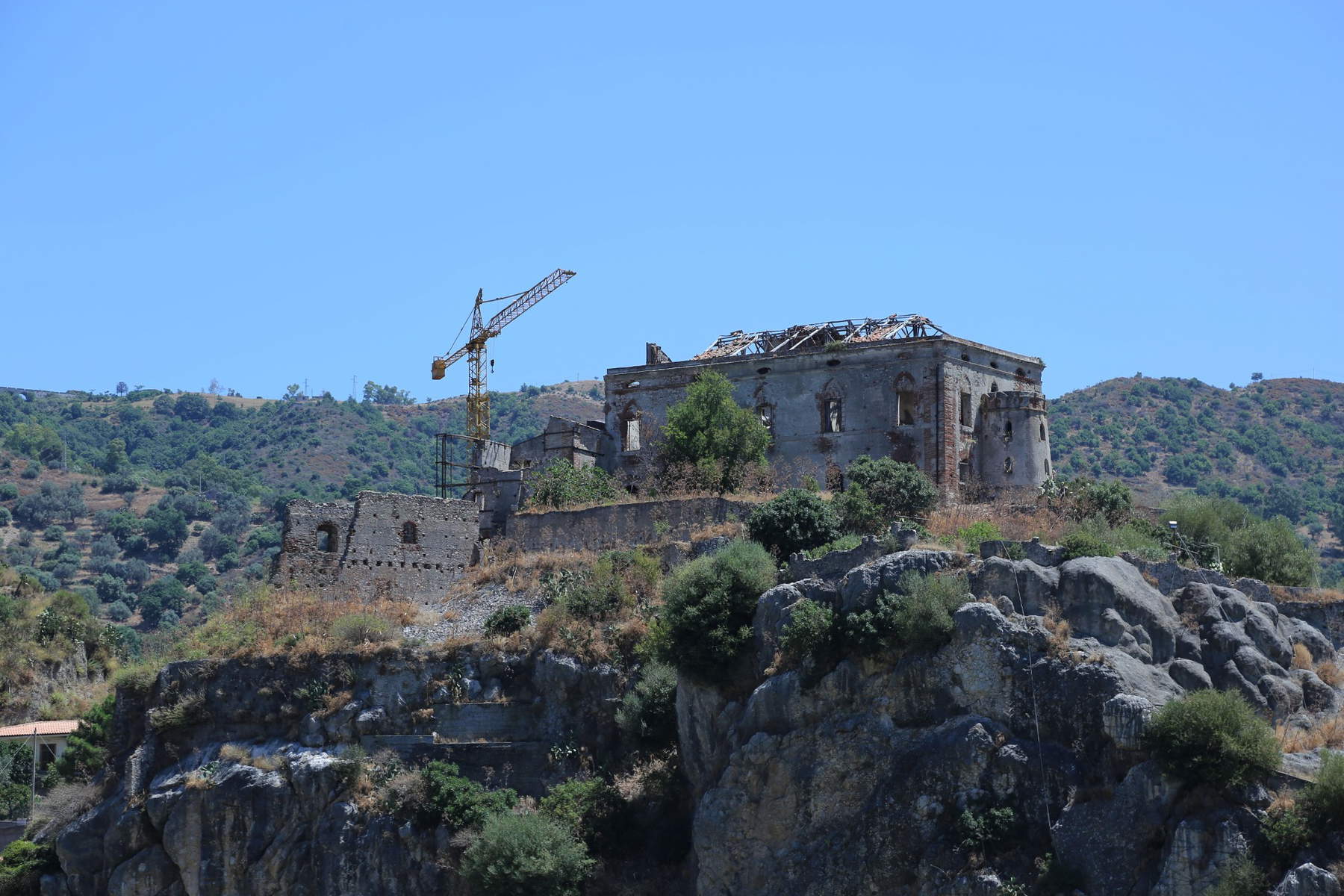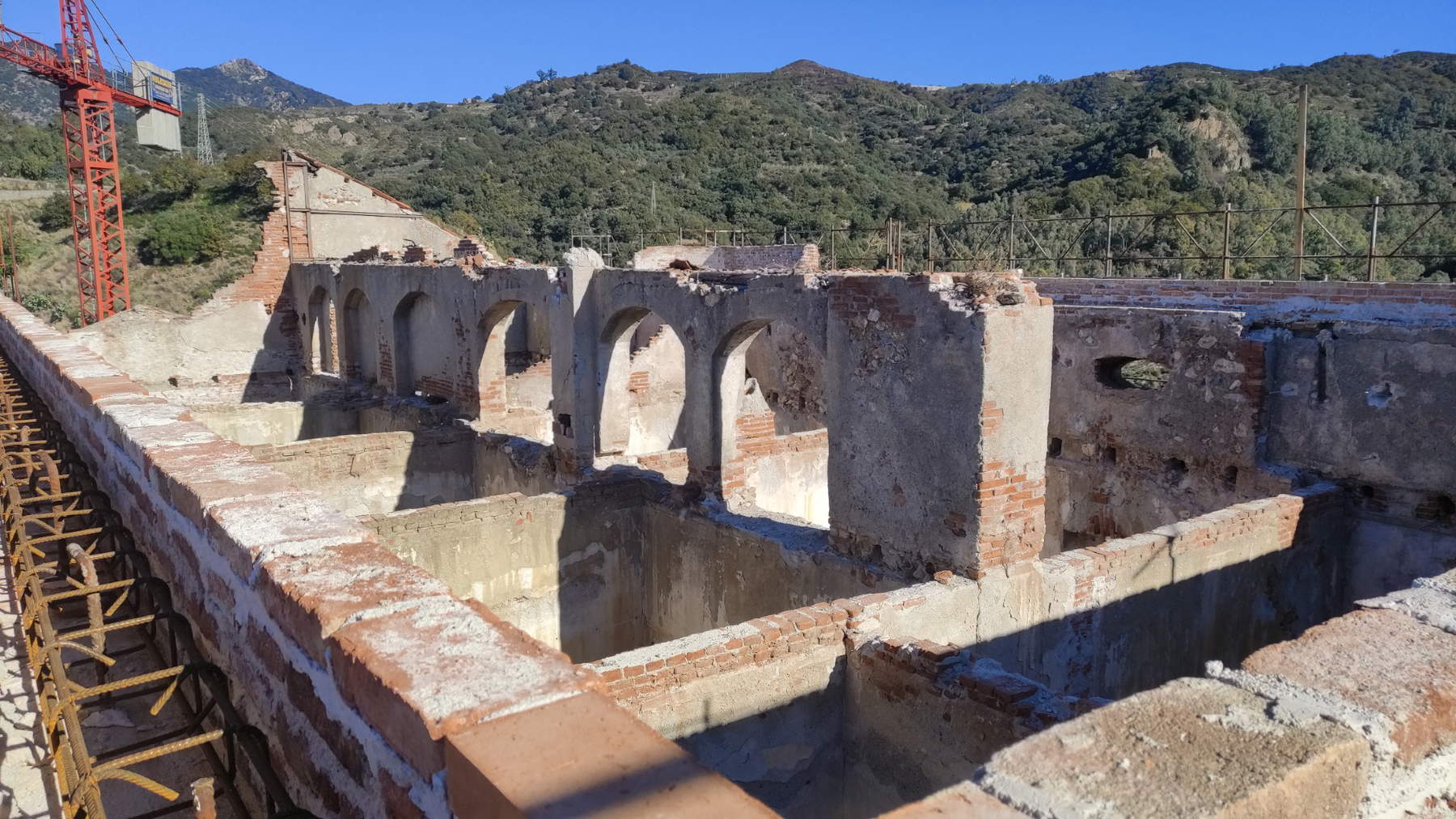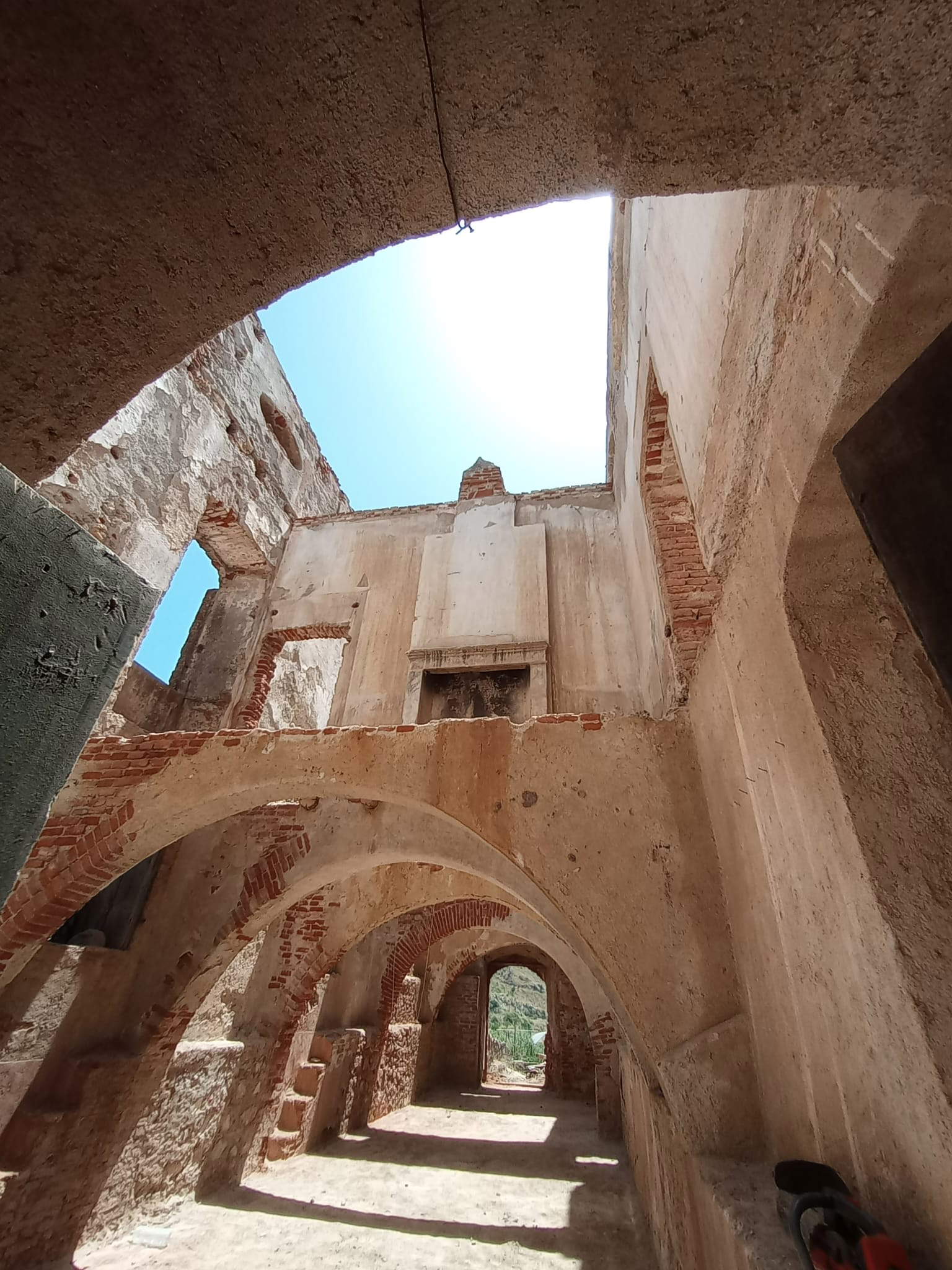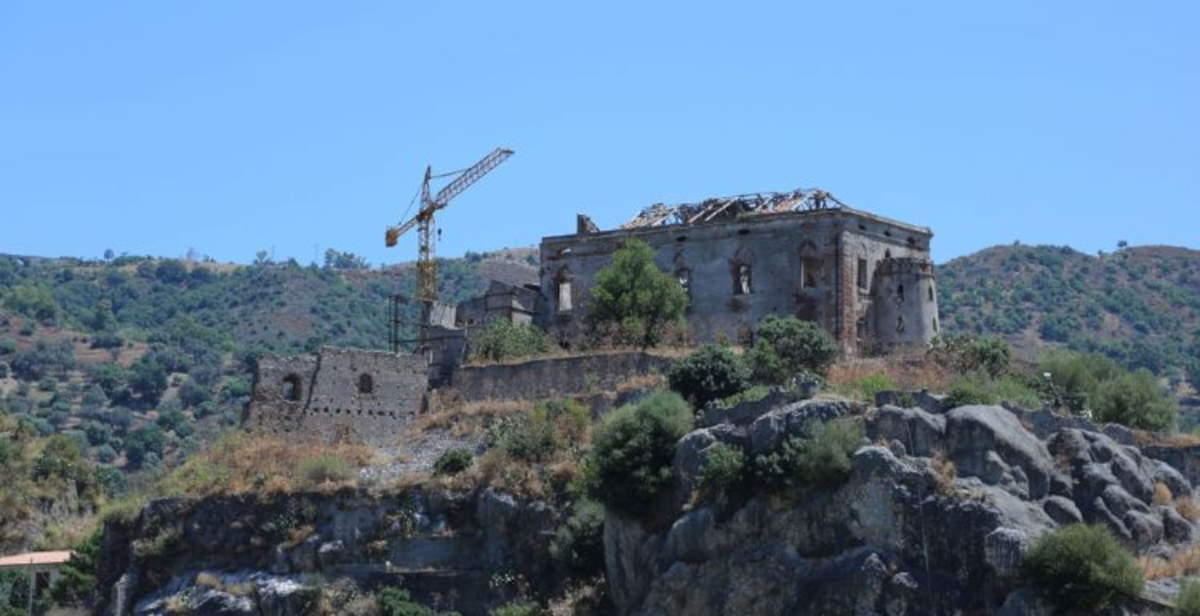Therehabilitation of the Palizzi Castle in the province of Reggio Calabria, carried out under the 2014-2020 Complementary Operational Program for Action and Cohesion to the 2014-2020 NOP Culture and Development, has been concluded. The work, financed with a total amount of two million euros, involved the second lot of works and represents an important step in the enhancement of the monumental complex that dominates the Calabrian village.
The castle, erected on a cliff in a dominant position, is the result of a long building stratification developed between the 13th and 19th centuries. Born as a defensive structure to control borders and communication routes, it later became the noble residence of the Ruffo d’ Aragona d’Ajerb, owners since 1504, and later of the De Blasio family, who took possession in 1751. Already in precarious condition at the time of the transfer of ownership, the complex suffered severe damage during the 1783 earthquake, which forced the family to intervene in 1790. Between 1835 and 1850 it was transformed into a noble residence through the amalgamation of pre-existing structures. Further work was promoted by Baron Tiberio in 1866, who lived there until 1873, while the last permanent residence dates back to Don Carlo De Blasio, who lived there until 1943.


Access to the fortified complex is through an irregular path that runs between ruins, intact wall portions and traces of the original configuration. Of the two main bodies, the oldest nucleus had already been the subject of a municipal intervention after the acquisition of the castle by the Palizzi administration in 2007. The new project, implemented by the Soprintendenza Archeologia, Belle Arti e Paesaggio for the provinces of Reggio Calabria and Vibo Valentia as of June 2022, involved the residential part of the complex, inhabited until after World War II and consisting of three floors plus attic.
The building, built directly on the cliff, integrates with the morphology of the rock, creating a structural continuity evident in several rooms. The restoration and conservation works, aimed at reuse for cultural activities, were financed through the reprogramming of CAP resources provided by the Complementary Operational Plan to the NOP Culture and Development. The work was awarded to the Temporary Grouping of Companies formed by Consorzio Stabile Aurora Scarl (lead contractor) and Consorzio Stabile Fenix (lead contractor). For the Superintendency, the Single Project Manager was architect Roberta Filocamo, while the design and direction of works were handled by architect Michelangela Vescio, with the collaboration of architect Giuseppina Vitetta. Site security was entrusted to architect Laura Messina.

The intervention pursued the preservation of the historical stratifications and information contained in the factory, taking into account the modifications and changes of use undergone over time. The solutions adopted met the requirements of reducing seismic vulnerability, in accordance with the regulations on seismic improvement of buildings protected under Legislative Decree No. 42/2004. In the first stage, rehabilitation was carried out by dehumidification and ventilation of the floors and masonry in contact with the rock. Subsequently, structural safety was improved by reinforcing the masonry with NHL5 natural hydraulic lime concrete and FRP plating system. The ribbed cross vault of the hallway was reconstructed with “Catalan-style” technique, respecting the original outline and characteristics, and the hipped roof with chestnut trusses and masonry curb was reconfigured.
The wooden floors were restored according to the historic warping and completed with double floorboards integral to the masonry. The interiors were fitted with wooden fixtures and handcrafted terracotta flooring, while all architectural elements, such as cornices, moldings and ashlars, were restored. New electrical, water, fire and video surveillance systems were installed, along with a modern lighting system. Terrace floors were restored with a lime hood and waterproof base, while outdoor access spaces were paved with cobblestone. The restoration of the Palizzi Castle, in its overall articulation, returns to the territory a historical asset of great value and offers new perspectives for public use, assigning it to cultural functions and a sustainable and conscious use of the local architectural heritage.
 |
| Restoration of the Palizzi (RC) Castle: two million euro second lot completed |
Warning: the translation into English of the original Italian article was created using automatic tools. We undertake to review all articles, but we do not guarantee the total absence of inaccuracies in the translation due to the program. You can find the original by clicking on the ITA button. If you find any mistake,please contact us.